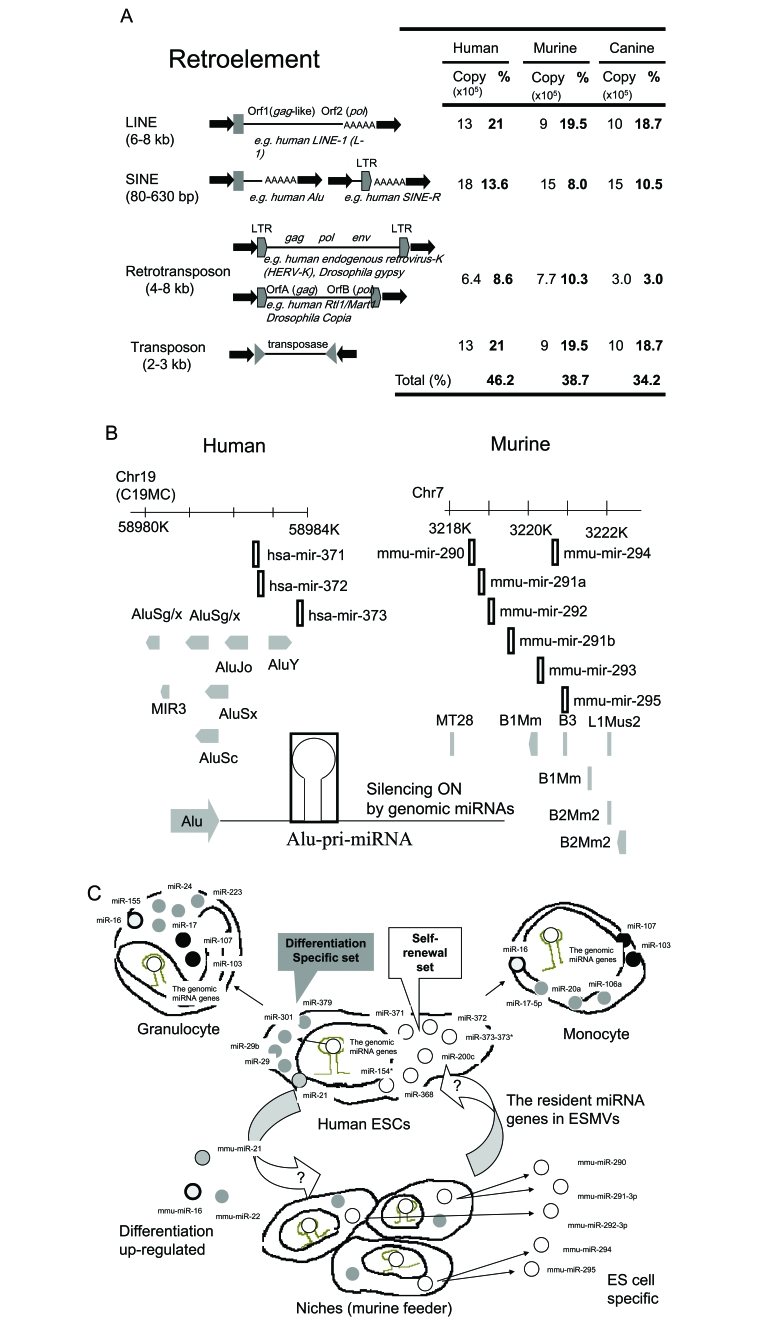Fig. (1).
A model of TE-controlled miRNA expression mechanisms. (A) Transposable elements (TEs) in the genome. The architecture of the genome for TEs was represented. (B) Alu-genomic miRNA switching. Clusters of miRNAs in human chromosome 19 (Chr19) and murine chromosome 7 are represented. These genomic miRNA genes are closely or overlapping localized in TEs, such as Alu and B1. The direction of TEs may not matter. TE could promote the expression of pri-miRNA (Alu-pri-miRNA) and genomic miRNAs from the pri-miRNA can be silence on translation of target mRNAs in ESCs. (C) ESC specific resident miRNAs for self-renewal and differentiation. Human ESCs express self-renewal specific set of miRNAs. The cluster of miR-371, 372 and 373 is related to the self-renewal of ESCs. The cluster of miR-290 in murine is also specific for ESC self-renewal and the murine miR-290 cluster genes are transferred from ESCs to neighboring cells by ESC microvesicles (ESMVs). For differentiation of ESCs, other resident miRNAs are presented and then the profile of miRNAs in differentiated cells, such as granulocytes and monocytes is greatly different from that of ESCs.

